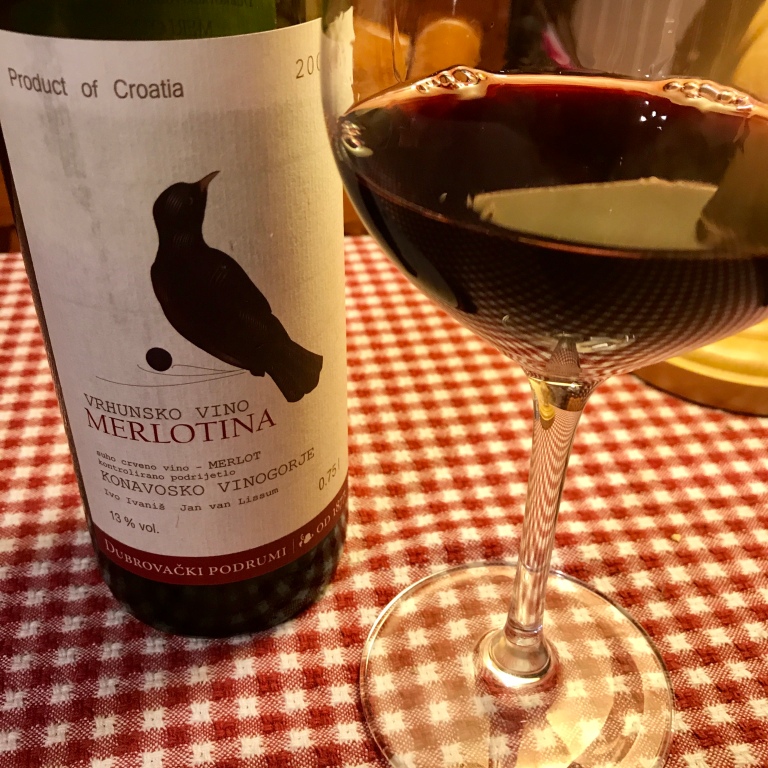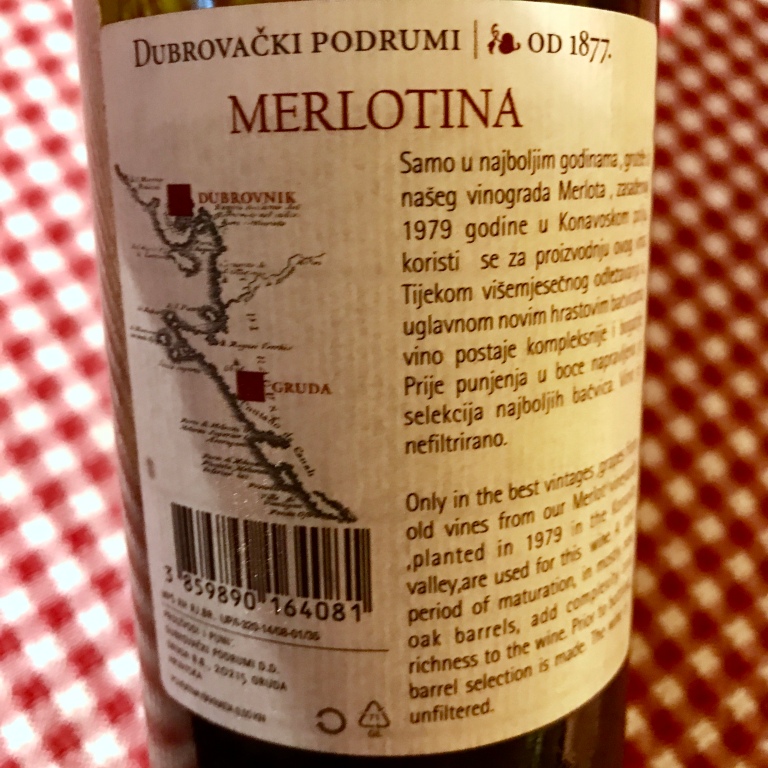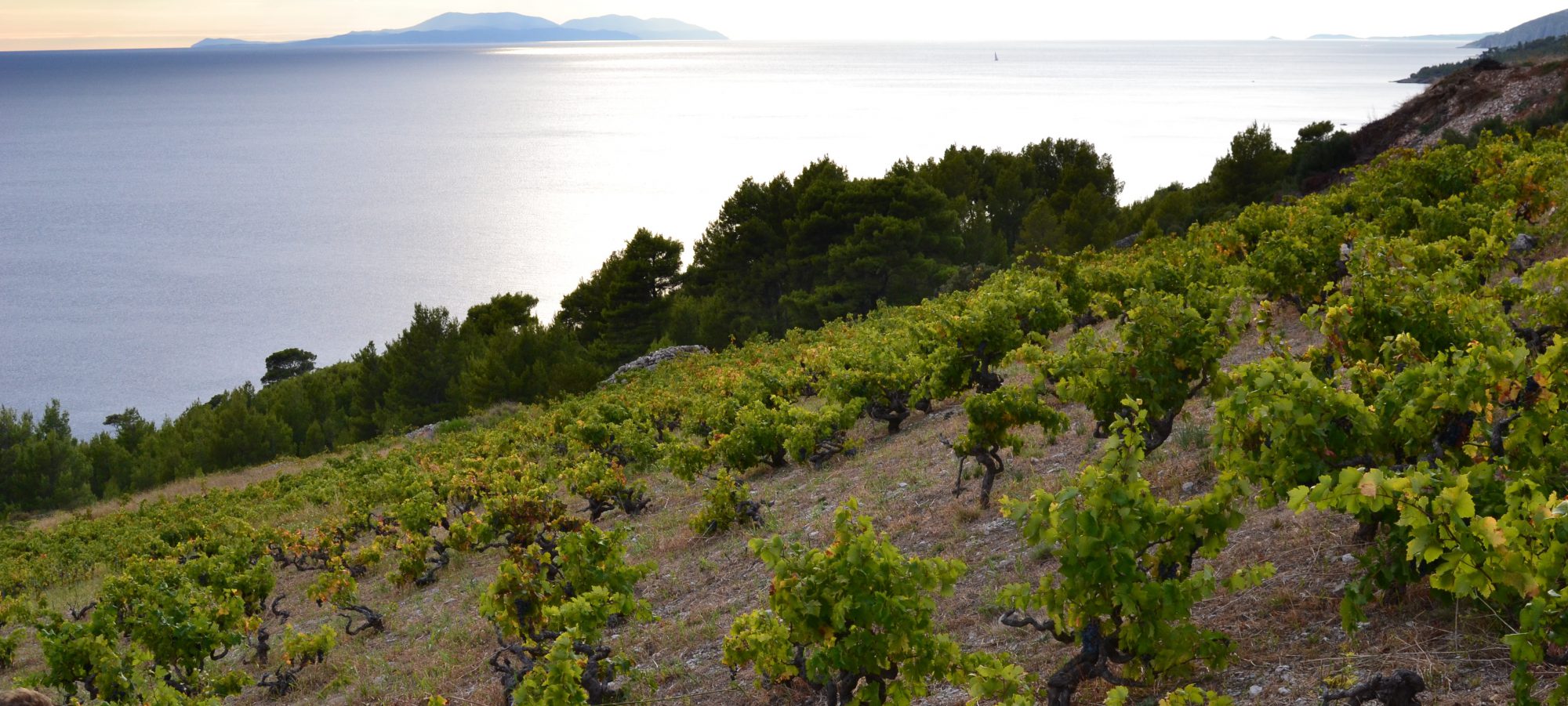As much as I love the fascinating assortment of indigenous grape varieties in Croatia, many of which I have written about in these pages, international varieties such as Cabernet Sauvignon, Merlot, Syrah, Riesling, Chardonnay, and Sauvignon Blanc—among many others (for more info, check out this previous post, Grapes of Croatia: The Internationals)—can be found throughout Croatia’s four major wine growing regions. Every once in a while a wine made from one of these international grapes shines a spotlight on the wonderful potential of world-class winegrowing in Croatia.
I acquired such a wine, Dubrovački Podrumi 2007 Merlotina, while attending the Dubrovnik FestiWine back in April, and I am very grateful that I included this wine among the many I stuffed into my suitcase for the trip back home to New Jersey (“Thank you” to Mario Tomeković, sommelier extraordinaire, for recommending it!).
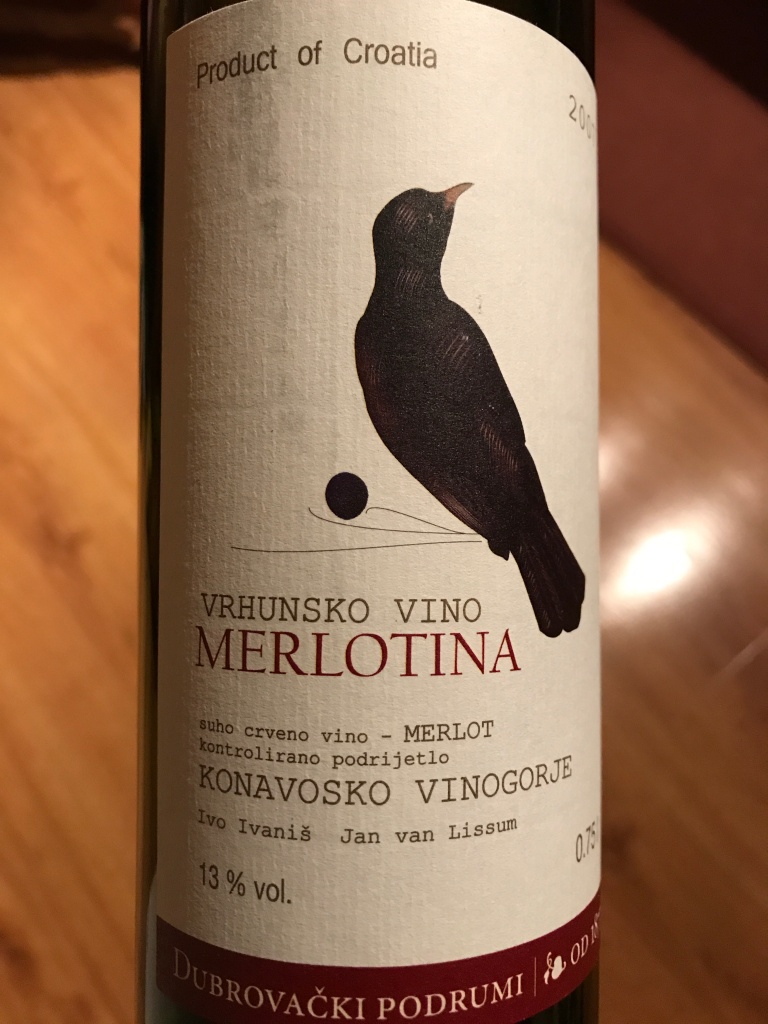
Dubrovački Podrumi (podrumi = “cellars”) is a winery located in Gruda, about 32 kilometers (20 miles) south of Dubrovnik in the Konavle vinogorje (winegrowing hills). Konavle is actually a lovely (but in places overgrown and underutilized) narrow field located between the Sniježnica mountain and the Adriatic Sea. Here Dubrovački Podrumi cultivates 35 hectares of estate vineyards, with another 70 hectares under contract, planted to Cabernet Sauvignon, Merlot, Vranac, Plavac Mali, Kadarun, Dalmatinka, and Maraština.
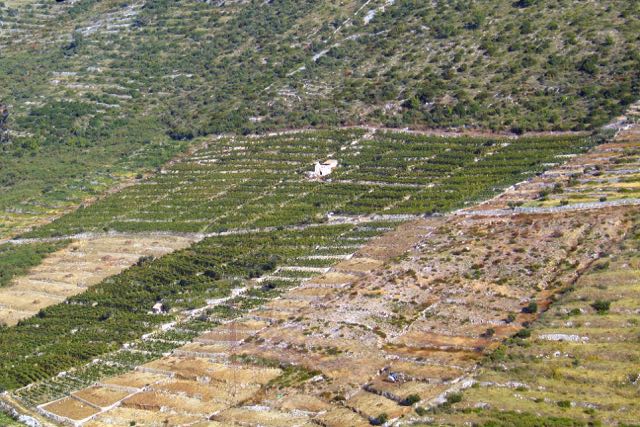
Merlotina is one of two Vrhunsko (Premium) quality wines offered by the winery (the other is a Cabernet Sauvignon called Trajectum). Produced from 100% Merlot, the grapes for Merlotina are carefully selected from vines planted in 1979, vinified and aged in assorted oak barrels (primarily Slavonian oak).
I’m pretty sure a lot of wine professionals and sommeliers would be skeptical of a ten-year old Merlot from southern Croatia. I too was a little concerned about its age and condition after so many years and uncertain providence). But Merlotina did not disappoint. It was a gorgeous wine, somewhat reminiscent of aged Bordeaux on the nose, with developed aromas of dried plum, blueberry, bittersweet chocolate, and distinct graphite and wood smoke notes. The wine was still nicely fresh on the palate, with juicy acidity and fine, well-integrated tannins. The only downside was that the mid-palate fruit seemed to be growing a bit thin, allowing the heat of alcohol (13 percent ABV) to press through and knock the balance slightly off kilter.
The verdict? Dubrovački Podrumi 2007 Merlotina is an excellent example of Merlot from Croatia. Although it is drinking deliciously now, I don’t recommend aging this wine any longer. Drink up! —CR
